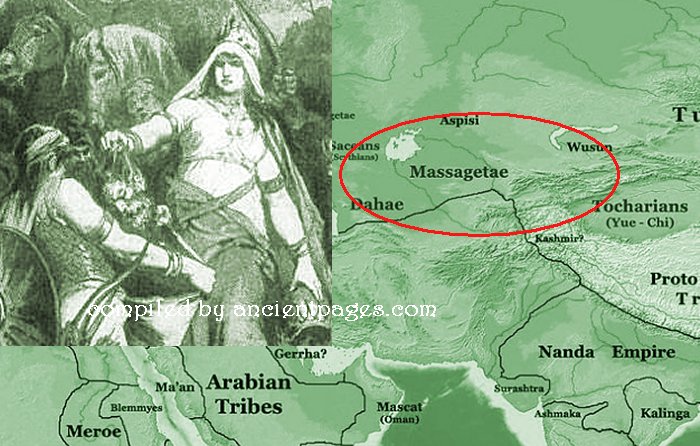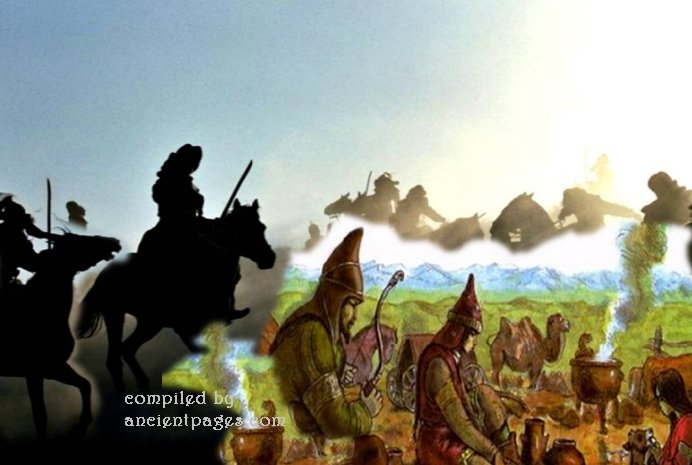Massagetae Tribe And Its Queen Tomyris Whose Victory Over Cyrus The Great Became A Legend
A. Sutherland - AncientPages.com - In his great work "Histories," Herodotus mentions an interesting historical event in 529 BC when Cyrus the Great II, the Elder (about 590 - 529 BC) - King of Persia from the Achaemenid dynasty - died.
From the records of Herodotus, the Massagetae crashed a vast army of Persians, then they captured the king himself, put him to death, and publicly humiliated him.
How did the pathetic incident for the ruler of Persia, Cyrus the Great happen?
It turns out that Cyrus II was continuously victorious until he attacked the Massagetae people, who, under Queen Tomyris, quickly ended the life story of this great historical figure.
Who Were These Extraordinary, Brave Massageteans?
The Massagetae (or Massageteans) is a shared name used by ancient sources to describe the Central Asian nomadic and semi-nomadic tribes in the descriptions of the Scythians. Under the name of the Scythians, there are most likely included many related tribes.
The most numerous of them were the Massagetae, whose Herodotus described in "The Histories."
"The people of this is [union of Massagetae] are numerous and warlike, live in the east on the other side of the river Arax (apparently, the Syr Darya )... For clothing and lifestyle massagets - like the Scythians. They fought on horseback and foot. Know both methods of war, fighting with bows and spears, and usually armed with axes.
All their items out of their gold and copper... they do not sow, feeding pets and fish, which deliver them in abundance Arax River. Milk is what they chiefly drink …The only god they worship is the sun."
The Massagetae inhabited the steppes of Central Asia, northeast of the Caspian Sea in modern Turkmenistan, western Uzbekistan, and southern Kazakhstan.
Their original language is still little-known, but it is assumed they spoke one of the Iranian languages. As to the origin of the Massageteans, there has been much debate among scholars, and numerous hypotheses exist about their identity and ethnic background.
Some have identified them with the Getae, a Thracian tribe inhabiting the Black Sea region of ancient Eastern Europe. Others linked them with the Gutians (or Guteans), a nomadic tribe from the northern and central ranges of the Zagros Mountains (now Iran) during ancient times. By many, the Massagetae are considered to be a Scythian race.
However, all these theories are not widely accepted.
Massagetae – Strong Nation Of Skilled Warriors
The Massagetae were said to be a great, strong, and warlike nation. When Cyrus, whose reign lasted about thirty years, had achieved the conquest of the Babylonians, he simply wanted more. He focused on campaigns in the east.
He did not want to start a risky or daring journey to Egypt.) He led a new expedition, which resulted in effective campaigns to subdue the provinces of Central Asia. Finally, he had to confront the Massagetae and bring them under his mighty dominion.
Herodotus writes, "Cyrus advanced a day's journey into Massagetan territory from the Araxes..."
Cyrus laid a trap by leaving his camp vulnerable, "leaving the worthless portion of his army in the camp, drew off with his good troops towards the river.
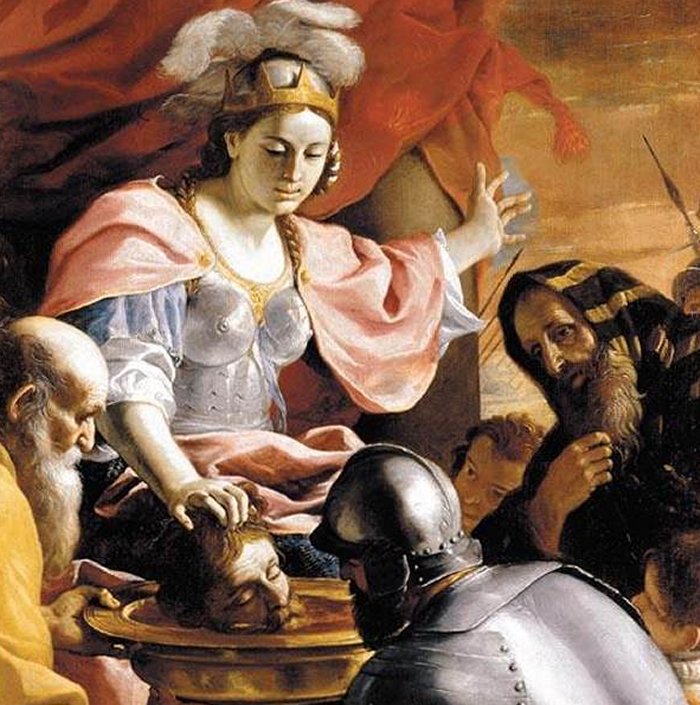 Queen Tomyris of the Massagetae receiving the head of Cyrus the Great. 1670-1672 painting. source
Queen Tomyris of the Massagetae receiving the head of Cyrus the Great. 1670-1672 painting. source
Soon afterward, a detachment of the Massagetai, one-third of their entire army, led by Spargapises, son of the queen Tomyris, coming up, fell upon the body which had been left behind by Cyrus and on their resistance put them to the sword. Then, seeing the banquet prepared, they sat down and began to feast. When they had eaten and drunk their fill and were now sunk in sleep, the Persians under Cyrus arrived."
Many of the Massagetae were killed, but even more taken prisoner, including Queen Tomyris's son, who was the commander of the army and whose name was Spargapises." ("Histories," 1.211)
During a short period of imprisonment, Spargapises realized his army's and his own careless mistakes. He begged Cyrus for freedom, and he was granted it. Once free, Spargapises committed suicide, perhaps in shame, humiliation, or to avoid capture.
Spargapises' mother, Tomyris, was furious; she gathered all her forces and engaged Cyrus in battle. It was strenuous and prolonged fighting. The Massagetae destroyed Cyrus' army and killed the Persian king.
On the other hand, in 'Stratagems in War,' Polyenus, a 2nd-century AD Macedonian author, writes:
"When Cyrus advanced against the Massagetae, Tomyris, their queen, retreated before him. The Persian army, closely pursuing her, entered and plundered her camp. There, they found a great quantity of wine and all sorts of provisions, on which they indulged immoderately, reveling throughout the night as if they had obtained a victory. In that situation, Tomyris attacked them and cut them to pieces, while they were partly buried in sleep, and partly so drenched with wine, and surfeited with banqueting, that they could scarcely stand upright; and Cyrus himself was slain..."
Written by – A. Sutherland - AncientPages.com Senior Staff Writer
Updated on September 6, 2024
Copyright © AncientPages.com All rights reserved. This material may not be published, broadcast, rewritten or redistributed in whole or part without the express written permission of AncientPages.com
Expand for referencesMore From Ancient Pages
-
 Amazing Restoration Of Ancient Roman Vineyard Buried Underneath The Ash Of Mount Vesuvius For 2,000 Years
Archaeology | Nov 27, 2020
Amazing Restoration Of Ancient Roman Vineyard Buried Underneath The Ash Of Mount Vesuvius For 2,000 Years
Archaeology | Nov 27, 2020 -
 First Genome-Wide Ancient Human DNA From Sudan Shines New Light On Nile Valley Past
Archaeology | Dec 20, 2021
First Genome-Wide Ancient Human DNA From Sudan Shines New Light On Nile Valley Past
Archaeology | Dec 20, 2021 -
 On This Day In History: 150 Highly-Trained Swiss Guards Entered Vatican For The First Time – On Jan 22, 1506
News | Jan 22, 2017
On This Day In History: 150 Highly-Trained Swiss Guards Entered Vatican For The First Time – On Jan 22, 1506
News | Jan 22, 2017 -
 Who Has Stolen Charles Darwin’s Notebooks Worth Millions From The University Of Cambridge?
News | Nov 24, 2020
Who Has Stolen Charles Darwin’s Notebooks Worth Millions From The University Of Cambridge?
News | Nov 24, 2020 -
 Stone Age Settlement Discovered Underwater In Finland
Archaeology | Aug 9, 2018
Stone Age Settlement Discovered Underwater In Finland
Archaeology | Aug 9, 2018 -
 Well-Preserved 1,000-Year-Old Ulfberht Sword Found In The Wisla River, Poland
Archaeology | Jan 23, 2024
Well-Preserved 1,000-Year-Old Ulfberht Sword Found In The Wisla River, Poland
Archaeology | Jan 23, 2024 -
 Dolmen de Soto: Unique Millennia-Old Underground Structure Remains A Puzzling Enigma
Featured Stories | Feb 10, 2022
Dolmen de Soto: Unique Millennia-Old Underground Structure Remains A Puzzling Enigma
Featured Stories | Feb 10, 2022 -
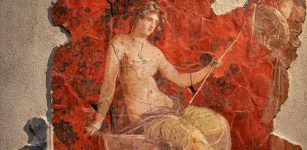 Never-Before-Seen Frescoes From Hadrian’s Time Unveiled At Ancient Roman Baths
Archaeology | Jun 27, 2022
Never-Before-Seen Frescoes From Hadrian’s Time Unveiled At Ancient Roman Baths
Archaeology | Jun 27, 2022 -
 Mystery Of The Hunza People: Did They Really Live To 145 Years Of Age?
Civilizations | Jul 5, 2018
Mystery Of The Hunza People: Did They Really Live To 145 Years Of Age?
Civilizations | Jul 5, 2018 -
 The Colored Skeletons Of 9000-Year-Old Çatalhöyük (Catalhoyuk), Turkey – New Examination
Archaeology | Mar 18, 2022
The Colored Skeletons Of 9000-Year-Old Çatalhöyük (Catalhoyuk), Turkey – New Examination
Archaeology | Mar 18, 2022 -
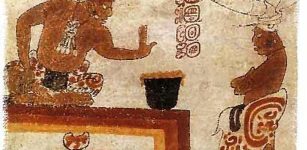 Chocolate Was Invented In Mesoamerica 1900 B.C.
Ancient History Facts | Jan 17, 2016
Chocolate Was Invented In Mesoamerica 1900 B.C.
Ancient History Facts | Jan 17, 2016 -
 Danger Lurking In The Woods – Strange And Unexplained Sightings – Part 2
Featured Stories | Jul 7, 2018
Danger Lurking In The Woods – Strange And Unexplained Sightings – Part 2
Featured Stories | Jul 7, 2018 -
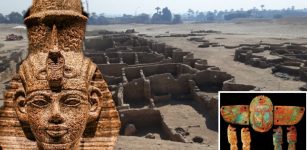 Lost Golden City Of Pharaoh Amenhotep III Discovered In Luxor
Archaeology | Apr 9, 2021
Lost Golden City Of Pharaoh Amenhotep III Discovered In Luxor
Archaeology | Apr 9, 2021 -
 Dearg-Due Frightening Female Demon And Tyrannical Abhartach Of Irish Folklore
Celtic Mythology | Jan 5, 2017
Dearg-Due Frightening Female Demon And Tyrannical Abhartach Of Irish Folklore
Celtic Mythology | Jan 5, 2017 -
 Thousands Of Roman Coins Found Across Europe Are Fake – Archaeologists Say
Archaeology | Jul 9, 2019
Thousands Of Roman Coins Found Across Europe Are Fake – Archaeologists Say
Archaeology | Jul 9, 2019 -
 Was Biblical Adam A Giant Who Emerged From An Underground World?
Biblical Mysteries | May 24, 2018
Was Biblical Adam A Giant Who Emerged From An Underground World?
Biblical Mysteries | May 24, 2018 -
 What Is A Mural Of Tepoztēcatl, Aztec Rabbit God Of Alcohol Doing In A Mexican Church?
Archaeology | Oct 15, 2022
What Is A Mural Of Tepoztēcatl, Aztec Rabbit God Of Alcohol Doing In A Mexican Church?
Archaeology | Oct 15, 2022 -
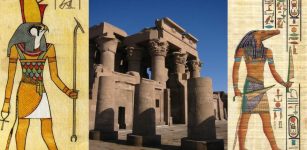 Unusual Double Temple Of Kom Ombo Dedicated To Crocodile God Sobek And Falcon-Headed God Horus
Featured Stories | Mar 14, 2016
Unusual Double Temple Of Kom Ombo Dedicated To Crocodile God Sobek And Falcon-Headed God Horus
Featured Stories | Mar 14, 2016 -
 Sed Festival – Ancient Egyptian Ritual Tested Pharaohs
Ancient History Facts | Mar 28, 2018
Sed Festival – Ancient Egyptian Ritual Tested Pharaohs
Ancient History Facts | Mar 28, 2018 -
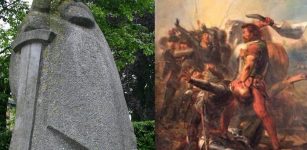 Grutte Pier – Legendary Giant Frisian Freedom Fighter Who Sought Revenge
Featured Stories | Dec 20, 2018
Grutte Pier – Legendary Giant Frisian Freedom Fighter Who Sought Revenge
Featured Stories | Dec 20, 2018

